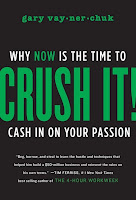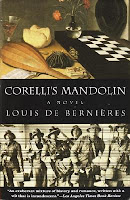 I’ve been waiting to review Labor Day until my interview with Joyce Maynard was posted over on our company blog, The Savvy Reader. Then, all of a sudden weeks go by and I haven’t managed to type a single word let alone post any book reviews. Thankfully, I’m only behind by about three reads so it’s not that bad.
I’ve been waiting to review Labor Day until my interview with Joyce Maynard was posted over on our company blog, The Savvy Reader. Then, all of a sudden weeks go by and I haven’t managed to type a single word let alone post any book reviews. Thankfully, I’m only behind by about three reads so it’s not that bad.
The novel takes place in a small New Hampshire town during a moment when all of the main characters are on the cusp of major changes in their lives. As the hot, uncomfortable last weekend of summer begins, Henry, who’s thirteen, and his mother, Adele, head out to get school clothes. For most, it’s an everyday kind of errand, for Henry and Adele, it represents a rare moment when she actually leaves the house.
While they’re at the store, Henry comes upon a bleeding, baseball cap-wearing stranger who asks for a ride home. Turns out Frank’s an escaped prisoner who takes refuge (and hostages if we’re being entirely correct) at Adele’s. There’s an element of suspended disbelief here, it’s Maynard writing the novel, and not McEwan, and while Frank might have committed a crime to get in jail, it’s never apparent he actually belongs there. There’s an element of Shawshank to his backstory, which gets unraveled over the course of the time he spends purposefully sequestered with Henry and Adele at their house.
The tumultuous relationship between Henry and his parents (who are divorced; his father’s remarried with a stepson and a new daughter) is necessarily exacerbated by Frank’s illegal presence. But not in the ways that you would expect. They’re not in danger. And the fear comes from the impending change more so than anything else. Maynard told me that she wanted to write a novel that looked at how this thirteen-year-old dealt with the sex lives of his parents — while he’s on the cusp of his own. This journey, or realization might be a better word, starts Henry off on the dangerous path that forces the unlikely situation to its necessary conclusion.
There’s an urgency to Maynard’s novel that echoes its tight timeframe. The major action of the book all takes place over those few days and the constraints of time drive the story. In turn, this makes the novel utterly readable — the perfect title to sit down for a couple of hours in an afternoon to finish, a book utterly meant for a “book-a-day” challenge. In some ways, the book reminded me, in setting only, to John Irving and Elizabeth Stout; story-wise, there’s a little of Ann Patchett’s Run in this book. Overall, the achingly and lovely last passages of the novel brought tears to my eyes.









